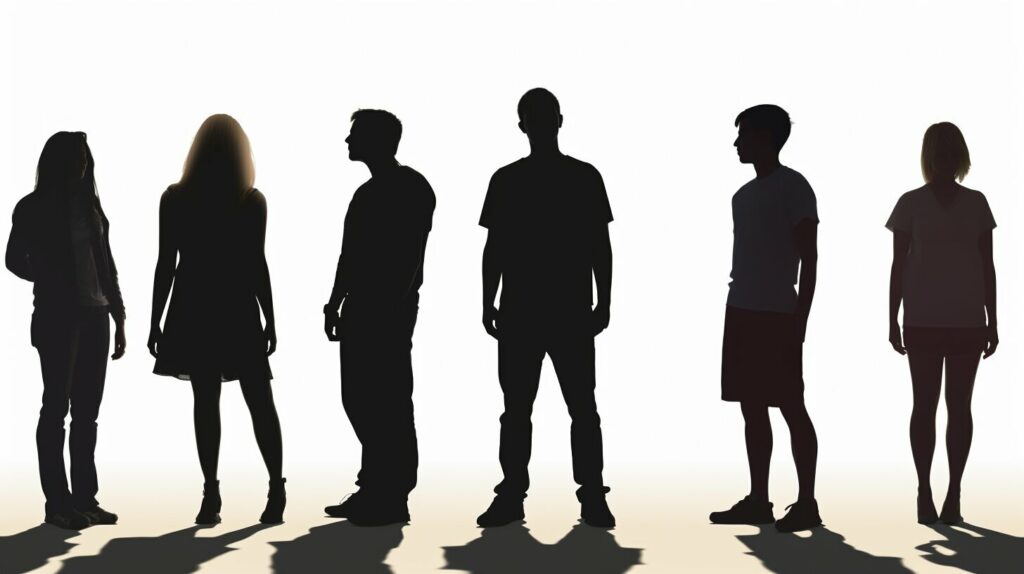What is the most attractive BMI?
Body dissatisfaction, ideal body size, and attractive BMI calculation are all important factors when it comes to understanding our perceptions of beauty and body image. In this article, we will explore the concept of the most attractive BMI and the various factors that influence our perception of ideal body size.
Key Takeaways:
- Body dissatisfaction is linked to the development of eating disorders and is often related to the pursuit of an idealized body size.
- Women in Western cultures tend to idealize a thin and toned physique as the desirable body size.
- Social media platforms contribute to the perpetuation of the thin ideal and can negatively impact body image.
- Cultural variations exist in body size preferences, with some societies valuing plumpness while others emphasize a thinner body ideal.
- BMI is a widely used measure of body weight and classification, but it may not capture all aspects of a person’s body composition.
The impact of social media on body image
Social media platforms have become powerful influencers in shaping body image and can have a detrimental impact on individuals’ perception of themselves. The constant exposure to carefully curated and filtered images on platforms like Instagram can create unrealistic beauty standards and contribute to body dissatisfaction.
Users of social media often feel pressured to present an idealized version of themselves, leading to feelings of inadequacy and low self-esteem. Comparing oneself to the seemingly perfect bodies showcased on social media can exacerbate body image issues and may even contribute to the development of eating disorders.
“Social media has become a breeding ground for comparison and self-criticism. It’s easy to fall into the trap of thinking that everyone else’s bodies are flawless, leading to body dissatisfaction and a negative self-image.”
Research has also found a strong link between social media use and the internalization of the thin ideal. Exposure to images of predominantly thin and toned bodies on social media can lead individuals to perceive these body types as the norm and aspire to achieve them. This perpetuates the cycle of body dissatisfaction and can have a lasting impact on individuals’ mental health and well-being.

| Social Media | Impact on Body Image |
|---|---|
| Constant exposure to idealized body types, leading to increased body dissatisfaction. | |
| Comparison with others’ seemingly perfect lives and bodies, contributing to low self-esteem. | |
| TikTok | Popularization of beauty trends and challenges that may promote unrealistic body standards. |
It is crucial to recognize the impact that social media has on body image and develop strategies to promote a healthy relationship with online platforms. This includes curating a diverse and inclusive social media feed that showcases a range of body types and sizes. Additionally, fostering positive self-esteem and self-acceptance can help individuals resist the pressures of social media and embrace their unique beauty.
Factors Influencing Body Size Estimation and Idealization
Body size estimation and idealization are complex processes influenced by a variety of factors. The perception of one’s own body size and the body size of others can be distorted due to societal thinness standards and internalized importance of body size on self-image. Additionally, the context in which body ideals are presented, such as figure rating scales, can impact body size estimation.
Research has found that women tend to misestimate their own body size more than that of others, which may be attributed to the internalized focus on personal body size. The misestimation of body size can also be influenced by the thinness standards perpetuated by Western societies. A thin body is often perceived as a normal weight body, resulting in a distorted perspective of what is considered an ideal body size.
The response to figure rating scales can also vary depending on the context of body ideals. Figure rating scales that present thinner bodies as more desirable may lead to higher idealization of thinness and greater dissatisfaction with one’s own body size. This highlights the influence of societal standards and media portrayal of the thin ideal in shaping body size estimation and idealization.

Factors Influencing Body Size Estimation and Idealization
| Factors | Influence |
|---|---|
| Societal thinness standards | Distorted perception of ideal body size |
| Internalized importance of body size | Misestimation of own body size |
| Context of body ideals | Impact on figure rating scale responses |
Understanding the factors that influence body size estimation and idealization is crucial for addressing body dissatisfaction and promoting a healthier body image. By challenging societal thinness standards, promoting diverse body representations, and fostering positive body image messages, we can help individuals develop a more accurate perception of their own bodies and reduce the negative impact of distorted body size ideals.
Gender Differences in Perceptions of Ideal Body Size
When it comes to perceptions of ideal body size, gender plays a significant role. Research has consistently shown that men and women have different preferences and ideals when it comes to body size and attractiveness. While women tend to idealize a thinner body, men often prefer a slightly higher BMI in women.
Studies have indicated that the preferred BMI for women is often lower than the mean or modal values observed in typical young women. This preference for a lower BMI in women is thought to be related to perceptions of health and fertility. Men may associate lower BMI with better overall health and reproductive capabilities.
However, it is important to note that the perception of attractiveness and health is not solely determined by BMI. Factors such as cultural context and societal beauty standards can influence these preferences. It is also crucial to consider that these preferences can vary across individuals and populations.

Table: Gender Differences in Ideal Body Size Preferences
| Gender | Preferred BMI for Women |
|---|---|
| Men | Slightly higher BMI |
| Women | Lower BMI |
The table above summarizes the gender differences in ideal body size preferences. It highlights the general tendency for men to prefer a slightly higher BMI in women, while women tend to idealize a lower BMI. These preferences are influenced by various factors, including perceptions of attractiveness, health, and fertility.
Cultural Variations in Body Size Preferences
Cultural influences play a significant role in shaping body size preferences. Different societies have varying ideals when it comes to attractiveness, health, and fertility. While Western cultures often emphasize a thinner body ideal, other cultures may prioritize a fuller and more voluptuous figure. These cross-cultural differences in body size preferences highlight the impact of cultural norms and values on beauty standards.
Research has shown that in subsistence and forager groups, plumpness is often preferred. This preference may be rooted in cultural beliefs that associate larger body size with abundance, fertility, and good health. In contrast, Western societies tend to promote a thinness ideal, influenced by media portrayals and societal pressures. The preference for a low body mass index (BMI) in well-nourished populations may not align with the health and fertility hypothesis, as lower BMIs have been linked to increased mortality rates and poor health outcomes in women.
Understanding cultural variations in body size preferences is crucial for promoting body positivity and challenging unrealistic beauty standards. It is essential to recognize and appreciate diverse body shapes and sizes, as well as the cultural contexts that shape these preferences. By fostering a more inclusive and accepting society, we can promote healthier body image and well-being for individuals of all shapes and sizes.
The Role of Media in Shaping Body Size Preferences
Media plays a significant role in shaping body size preferences across cultures. The portrayal of thin ideals in media influences how individuals perceive attractiveness and body image. Western media, in particular, often promotes a thinness ideal that can contribute to body dissatisfaction and unhealthy body image among individuals.
Exposure to thin ideal images on social media platforms can further exacerbate these issues. Users may feel pressure to conform to unrealistic beauty standards and strive for an unattainable thin body. Social comparison also plays a role, as individuals compare themselves to the perceived ideals presented on social media.
It is important to critically analyze and challenge media representations of body size and promote a more diverse and inclusive range of beauty standards. By showcasing a broader range of body shapes and sizes, we can help individuals develop a healthier and more positive body image.
| Cultural Variations in Body Size Preferences | Attractiveness | Health | Fertility |
|---|---|---|---|
| Western Cultures | Thin body ideal | Lower BMI perceived as more attractive | Lower BMI associated with perceived fertility |
| Subsistence and Forager Groups | Preference for plumpness | Fuller figures associated with attractiveness | Larger body size linked to perceived fertility and good health |
The relationship between BMI and health
BMI (Body Mass Index) is a widely used measure to assess an individual’s health status. It is calculated by dividing a person’s weight in kilograms by the square of their height in meters. While BMI provides a general indication of whether someone is underweight, normal weight, overweight, or obese, it does not capture all aspects of body composition.
Overweight and obesity, indicated by high BMI values, have been consistently associated with increased risks of various health conditions, including cardiovascular diseases, type 2 diabetes, and certain cancers. Excess weight can put strain on the body, leading to chronic inflammation and metabolic dysregulation.
On the other hand, being underweight, indicated by low BMI values, also poses health risks. Research has shown that underweight individuals may be more susceptible to complications such as frailty, osteoporosis, and increased mortality rates. It is important to note that the relationship between BMI and health outcomes is influenced by various factors, including body composition, physical fitness, and individual health profiles.
| BMI Category | Health Implications |
|---|---|
| Underweight (<18.5) | Increased risk of frailty, osteoporosis, and higher mortality rates. |
| Normal weight (18.5-24.9) | Generally considered a healthy range, but individual health profiles may vary. |
| Overweight (25-29.9) | Increased risk of cardiovascular diseases, type 2 diabetes, and certain cancers. |
| Obese (>30) | Higher likelihood of developing chronic health conditions and reduced overall health. |
“BMI serves as a useful screening tool for assessing weight status and potential health risks, but it should not be used as the sole determinant of an individual’s health. Other factors such as body composition, physical fitness, and lifestyle habits should also be considered.”
It is important to approach weight and health holistically, focusing on overall well-being rather than solely relying on BMI as a measure of health. Regular physical activity, a balanced diet, and maintaining a healthy lifestyle all play significant roles in promoting optimal health outcomes, regardless of an individual’s BMI.

The impact of BMI on fertility
When it comes to fertility, both low and high BMI levels can have negative implications. Underweight women may experience menstrual dysfunctions and hormonal imbalances, which can lead to difficulties in conceiving. On the other hand, obese women may also face challenges in getting pregnant due to menstrual irregularities and higher risks of miscarriage.
Research has shown that BMI plays a significant role in the overall reproductive health of women. Maintaining a healthy BMI is crucial for menstrual function and pregnancy outcomes. Women with a BMI within the normal range have better chances of conceiving and experiencing a healthy pregnancy.
To highlight the impact of BMI on fertility, let’s take a look at the following table:
| BMI Range | Impact on Fertility |
|---|---|
| Underweight (BMI <18.5) | Increased risk of menstrual dysfunctions and hormonal imbalances, leading to infertility. |
| Normal weight (BMI 18.5-24.9) | Optimal BMI range for improved chances of conceiving and healthy pregnancy outcomes. |
| Overweight (BMI 25-29.9) | Slightly increased risk of fertility issues, but not as significant as underweight or obese individuals. |
| Obese (BMI >30) | Higher risks of menstrual irregularities, difficulties in conceiving, and increased chances of miscarriage. |
As shown in the table, maintaining a healthy BMI within the normal weight range is crucial for optimizing fertility and ensuring a smoother reproductive journey.
Perceived Attractiveness and Health of Different BMIs
When it comes to body weight and size, individuals’ perceptions of attractiveness and health can vary. Research has shown that in well-nourished populations, lower body mass index (BMI) values are generally associated with greater perceived attractiveness. This preference for lower BMIs may be influenced by societal beauty standards and the portrayal of thin bodies as ideal in media and popular culture. However, it is important to note that the perception of attractiveness does not always align with optimal health or fertility.
While lower BMIs may be perceived as more attractive, it is essential to consider the impact on overall health and well-being. BMI is a widely used measure to assess health status, but it does not capture all aspects of body composition. Both overweight and underweight individuals face health risks and increased mortality rates. It is crucial to promote body positivity and focus on overall physical health rather than solely striving for a specific BMI range.
Fertility is another factor influenced by BMI, with both low and high BMIs having negative implications. Underweight women may experience menstrual dysfunctions and hormonal imbalances, leading to infertility. On the other hand, obese women may have difficulties conceiving and face higher risks of miscarriage. Achieving a healthy and balanced BMI is important for reproductive health, but it should not be the sole determinant of one’s self-worth or attractiveness.
Table: Perceived Attractiveness and Health of Different BMIs
| BMI Range | Perceived Attractiveness | Health Implications |
|---|---|---|
| Low BMI | Perceived as attractive in well-nourished populations | Increased risks of health issues, including hormonal imbalances and infertility |
| Normal BMI | Varies based on cultural beauty standards | Optimal health and lower risks of health issues |
| High BMI | Varies based on cultural beauty standards | Increased risks of health issues, including difficulties conceiving and higher risks of miscarriage |
It is essential to acknowledge that perceptions of attractiveness and health are influenced by societal and cultural factors. Beauty standards are not universal, and preferences for body size and shape can vary across different cultures and individuals. The focus should shift towards promoting body diversity and acceptance, recognizing that beauty comes in various shapes and sizes. Emphasizing overall health, self-care, and positive body image can contribute to well-being and improved body satisfaction.
Psychological and Evolutionary Perspectives on BMI Preferences
When examining BMI preferences, both psychological and evolutionary perspectives offer valuable insights into human attractiveness and mate selection. From a psychological standpoint, individuals may be drawn to lower BMIs due to their association with perceptions of health and fertility. This is supported by research showing that well-nourished populations tend to perceive lower BMIs as more attractive. However, it is important to recognize that attractiveness is a subjective and multifaceted concept that can vary across cultures and individuals.
Evolutionary perspectives suggest that the preference for lower BMIs in women may be rooted in mate selection strategies. Historically, a lower BMI could have signaled higher levels of health and fertility, making individuals more desirable as potential partners and parents. However, it is essential to consider the impact of cultural context on BMI preferences. Different societies may prioritize different body sizes and shapes, leading to variations in attractiveness standards.
It is worth noting that BMI preferences are not universal, and individual differences play a significant role in shaping attractiveness judgments. Personal experiences, media exposure, and societal beauty standards all contribute to the formation of individual preferences. Additionally, it is crucial to approach BMI preferences with a critical lens, taking into account the complexity and diversity of human perceptions of attractiveness.
Overall, psychological and evolutionary perspectives provide valuable insights into BMI preferences. While psychological factors such as perceptions of health and fertility contribute to the preference for lower BMIs, evolutionary theories highlight the role of mate selection strategies. However, the influence of cultural context and individual differences should not be overlooked when examining attractiveness judgments. Further research is needed to gain a comprehensive understanding of BMI preferences and their implications in different cultural and social contexts.

Psychological Factors Influencing BMI Preferences
“Individuals may be drawn to lower BMIs due to their association with perceptions of health and fertility.”
Evolutionary Perspectives on BMI Preferences
“The preference for lower BMIs in women may be rooted in mate selection strategies.”
Conclusion
In conclusion, the most attractive BMI varies across cultures and individuals. It is influenced by societal beauty standards, media impact, and personal preferences. While a lower BMI is often perceived as attractive in well-nourished populations, it may not always align with optimal health or fertility.
It is important to recognize that the perception of ideal body size and attractiveness is complex and influenced by multiple factors. Cultural variations, individual preferences, and evolutionary perspectives all play a role in shaping our perceptions of the most attractive BMI.
Further research is needed to gain a deeper understanding of the relationship between BMI, body image, and overall well-being. This knowledge can help inform interventions and strategies to promote positive body image and reduce body dissatisfaction among individuals of all body sizes.
FAQ
How is the most attractive BMI determined?
The perception of the most attractive BMI varies across cultures and individuals, influenced by societal beauty standards, media impact, and personal preferences.
Does a lower BMI always indicate optimal health and fertility?
While a lower BMI is often perceived as attractive in well-nourished populations, it may not always align with optimal health or fertility.
What factors influence body size estimation and idealization?
Body size estimation is influenced by context, such as the types of bodies presented in figure rating scales, and the thinness standards perpetuated by Western societies. Social comparison and the media also play a role in idealization.
Are there gender differences in perceptions of ideal body size?
Yes, studies have found that women tend to idealize a thinner body, while men prefer a slightly higher BMI in women.
Do cultural variations exist in body size preferences?
Yes, different societies place varying importance on body size, with Western cultures emphasizing a thinner body ideal.
What is the relationship between BMI and health?
Both low and high BMIs can have negative implications for health, with overweight and obesity associated with increased risks of cardiovascular diseases, diabetes, and some cancers.
How does BMI impact fertility?
Both underweight and obese women may face fertility challenges, as underweight women may experience menstrual dysfunctions and hormonal imbalances, while obese women may have menstrual irregularities and a higher risk of difficulties conceiving and miscarriage.
How are different BMIs perceived in terms of attractiveness and health?
In well-nourished populations, lower BMIs are generally perceived as more attractive, but the perception of attractiveness and health may vary cross-culturally and depend on societal beauty standards.
What are the psychological and evolutionary perspectives on BMI preferences?
The preference for low BMI in women may be driven by perceptions of health, fertility, and mate value, but cultural variations and individual differences also influence BMI preferences.
What is the conclusion regarding the most attractive BMI?
The perception of the most attractive BMI is complex and influenced by multiple factors, including cultural variations, individual preferences, and evolutionary perspectives. Further research is needed to gain a deeper understanding of the most attractive BMI and its implications for body image and overall well-being.






